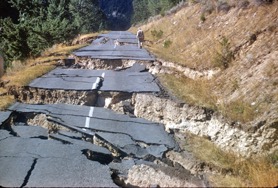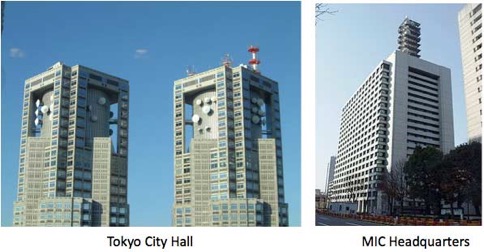Earthquakes & Telecom: Role of Fiber Optics in Seismically Active Areas
06 05, 11 09:28

When I finished graduate school “way back when”, I served almost 3 1/2 years in the Air Force working on underground nuclear test detection research projects. Now even in those days there were few underground nuclear tests, so when you try to detect them you really detect a lot of earthquakes - at least 20 a day greater than magnitude 4. So my Vietnam-era military service had the odd byproduct of learning about earthquakes before I got heavily involved in wireless communication technology.

We know we have to design telecom systems so they don’t have “common point failures” - a single system that brings down multiple apparently independent systems if it fails. Over reliance on fiber optics in seismically active regions, e.g. California, could result in major connectivity problems after “the big one” if many independent fiber routes are damaged by ground shifts.
With today’s technology, fiber is often the economically preferred medium for long haul connectivity due to its low marginal cost for bandwidth capacity. (Fiber actually has quite a high fixed cost for the initial installation in most cases due to installation issues - the fiber itself is rather inexpensive.) Fiber is also used for some neighborhood connectivity, e.g. Verizon FiOS, but damage to such systems would have less of an impact than damage to intercity connectivity or cellular backhaul.
In the 1960s intercity microwave was the preferred medium for long haul connectivity and DoD was concerned about the impact of nuclear war on this network. Thus the Executive Branch pushed FCC and the then monopolist AT&T to diversify the transmission technology base with buried coax cable systems designed to survive nuclear blast. Traces of this can be seen today in AT&T cable warning signs along Route 7 in Virginia outside the Beltway and an underground switching enter in Leesburg. In the monopoly era it was possible to do this modification of the network without explicit Commission action by just “leaning on” AT&T and getting FCC to agree not to question the extra costs in AT&T Section 214 certifications - in effect charging the marginal cost to monopoly rate base payers. But in today’s competitive era that is not feasible. (In the 1980s as competition grew, DoD used explicit funding to pay AT&T and its competitors to make other network modifications that were in the national interest. The specific details were never made public.)
Your blogger urges the Commission and industry to review the scope of fiber optic use in seismically active regions for both cellular backhaul and intercity connectivity and consider what combination of microwave and fiber is best for such situations. A more difficult issue would be how to pay for such mixes in a competitive industry if they cost more than the current mix. There are several possible policy options, some of which might require new legislation. But if we found ways to “fine tune” the telecom network structure for national security purposes during the Cold War - both before and after competition - we can find ways today also.
In Japan, long accustomed to seismicity and resulting damage, the use of microwaves for emergency communications is well established. The picture at the top of this blog is of a microwave tower in Sendai - of all places! (Google Earth shows the tower survived the quake.) Below are two photos that show the role of such microwaves in Japan for emergency communications. At left is the top of Tokyo City Hall showing how microwave antennas were carefully integrated into the building design. At right is the building of the Ministry of Internal Affairs and Communications (MIC) the parent agency of Japan’s FCC counterpart. (MIC also has many of OMB’s nonbudget functions and many of GSA’s functions so it is a key agency in the Japanese government.)
I hope FCC asks MIC about damage to fiber optics systems in Japan during the recent disaster and about the mix of microwave and fiber communications routes in Japan’s telecom network.

blog comments powered by Disqus



![Validate my RSS feed [Valid RSS]](valid-rss-rogers.png)

